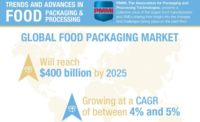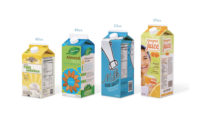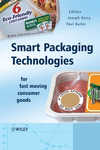According to the Association of Pool and Spa Professionals, there are 10.4 million residential pools in the U.S. That’s a lot of water to keep clean for safe swimming.
Like consumers in most markets, pool owners are becoming more conscious of safety and environmental issues when it comes to the products they are purchasing. They want to see sustainable improvements from pool product manufacturers that don’t compromise the overall functionality of the products.
A big area of opportunity for these improvements is in pool chemical packaging. There are new technologies on the horizon that can improve packaging in this market and ultimately benefit both manufacturers and consumers.
Emerging Technologies for Safer, Consumer-Friendly Packaging
Until recently, the pool chemical industry has been limited in terms of packaging formats. Rigid containers were (and often still are) the go-to option because of two concerns: child safety and chemical resistance.
Because many of these chemicals are regulated under the Environmental Protection Agency (EPA), brands are required to sell their products in packaging that withstands the corrosive nature of the chemicals they’re storing. Regulated product packaging must also be tested for child resistance as required under the Poison Prevention Packaging Act.
Fortunately, developments in flexible packaging and closure technologies have opened the door for alternatives to traditional, rigid containers or single-use pouches.
Flexible Packaging and Child-Resistant Closures
Offering many advantages and product features, flexible packaging continues to benefit industries like food, beverage and agri-chemical. With new improvements to film and closures, it’s also gaining traction in the pool industry.
Some pool products like shock treatments are already utilizing flexible packaging. These can be found in single-use pouches that are opened, emptied and discarded. The current challenge is creating larger, reclosable flexible packages for multiple treatments and additional products.
Flexible packages with high-performance film materials and compatible, child-resistant closures are currently undergoing sealing, filling and stress tests to ensure they can withstand manufacturing, distribution and utilization. Extensive child-safety testing is being completed, and shelf-life studies are determining how the packaging responds over reasonable time to some of the more aggressive formulations of certain products.
As the technology advances and flexible packaging overcomes the hurdles of child and chemical resistance, we can expect to see more water treatment brands incorporate reclosable flexible packaging into their product lines.
Consumer Benefits
From 2015-2017, pool chemical injuries led to an estimated 13,508 U.S. emergency department visits (Centers for Disease Control and Prevention). A third of those involved children under the age of 18, and most occurred at a residence.
For pool owners, safety is a top priority, especially when young children are present.
Flexible packaging with properly used child-resistant closures can keep pool chemicals out of the hands of young children. The durable film structure and simple but effective resealable closure will prevent accidental spills and exposure, which means both kids and adults will be kept safe.
For those pool owners who may struggle to open or handle bulky, rigid containers with challenging child-safety features, flexible packaging can provide a more user-friendly experience.
Eco-minded consumers will also appreciate this format. They can find comfort in the fact that the flexible package they purchase is leading to overall source reduction. According to a survey by Computer Generated Solutions (CGS), more than two-thirds of respondents consider sustainability when making a purchase, and they are willing to pay more for sustainable products. This includes shoppers of all ages and genders, so pool chemical companies that can communicate their source reduction efforts may capture those consumers looking to make a difference.
Shelf Appeal
According to Absolute Reports, the worldwide market for swimming pool chemicals is expected to reach $1.16 billion in 2024, up from $1.06 billion in 2019. Additionally, it states that the majority of pool chemicals used in the U.S. are used in residential pools.
Demand is high, and companies can make their products stand out with flexible packaging. Thanks to advancements in flexographic and digital printing, a stand-up flexible pouch can include eye-catching graphics that promote the sustainable nature and overall functionality of the package. As an added bonus, retailers will enjoy some of the same benefits as the manufacturers, including easier storage of the more compact packages.
This kind of shelf impact can make the difference when it comes to product selection, leading to more sales for the pool chemical company and a better product for the end user.
Sustainability
Flexible packaging can also help the earth. When it comes to sustainability, source reduction is the current focus in the pool chemical market.
Compared to rigid containers, flexible packaging requires less materials to produce, including plastic, water and fossil fuels. According to the Flexible Packaging Association, a rigid pail for cat litter packaging has a water footprint 1,370% higher than a flexible stand-up bag. Pool chemical packagers looking to stay on the leading edge can adopt similar technologies for their products.
Shipping, distribution and storage can all become more efficient with flexible packaging. Prior to filling, films for flexible packaging are shipped either flat or on a roll, which allows a large number of packages to be shipped on a truck. This reduces the number of trucks needed for inbound materials versus rigid packaging. Flexible packaging also takes up less space during storage. Think of 1,000 pails stacked in a warehouse versus 1,000 flexible pouches in a single box — it’s quite a lot of space saved.
Total Packaging Cost Benefit
In addition to the safety and sustainability benefits of flexible packaging, pool chemical companies can also enjoy a total packaging cost benefit. By lowering the amount of resources required to produce, ship and store their packaging, improved efficiencies can be realized across the supply chains. Companies can save money and increase their bottom lines in ways that aren’t possible with rigid containers.
Making the switch to flexible packaging in this market can lead to saved resources and money, as well as a product that’s more appealing to consumers.
A Major Step in Packaging Innovation
If flexible packaging objectives can be achieved in the pool chemical market, producers, retailers and consumers will have a better experience with the packaging — and ultimately the product. Though there are several commercial pool products available in flexible packaging, we have more to learn when it comes to packaging all pool chemical products. We must compare new packaging technologies to current options to fully understand the differences.
Safety, cost and sustainability all play a major role when it comes to packaging changes, and the move from rigid to flexible is a big step in improving all of these areas.





